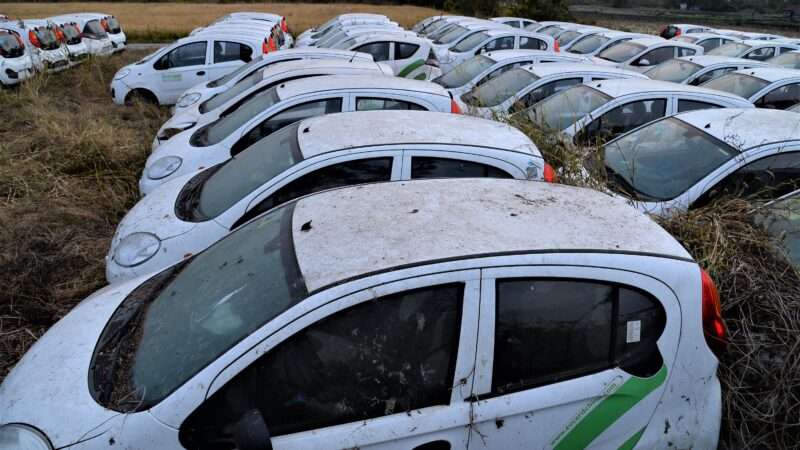
Last week, Bloomberg reported on China's electric vehicle (E.V.) "graveyards"—plots of land across the country where hundreds of vehicles have been abandoned.
From the outset, the piece places blame on "the excess and waste that can happen when capital floods into a burgeoning industry." It closes by quoting a Shenzhen–based photographer who calls the graveyards "a result of unconstrained capitalism…. The waste of resources, the damage to the environment, the vanishing wealth, it's a natural consequence." Not only does this quote get cause and effect totally wrong, but it also ignores the fact that China poured tons of government money into the industry.
China's government first implemented E.V. subsidies in 2009, spending nearly $30 billion by 2022. Buyers could receive rebates of as much as $8,400 per vehicle purchased. By the mid-'10s, Beijing disadvantaged the production of cars with poor fuel economy, and cities like Shijiazhuang and Hangzhou banned cars with internal combustion engines altogether.
Companies rushed to market with unimpressive offerings, especially compared to their gas-burning counterparts; some got barely 60 miles of range per charge. Most were bought by companies that would rent them to drivers.
But when the country started paring back incentives in 2019, many companies weren't prepared to compete without government cash as a backstop and were forced to close, relegating their fleets to molder in open fields.
E.V. graveyards are therefore an indictment of government policy, not capitalism. When private entrepreneurs enter into a nascent market, they put their own capital on the line; their ambition is tempered by the fear that failure will mean losing their shirt. But when the government agrees to cover part of the bill, or requires people to use that product, then it artificially lowers the risk.
China's example shows how subsidies skew the market. With the promise of free money, hundreds of companies flooded the market with substandard products that, on their own, stood no chance of competing directly with gas-powered cars. When the spigot shut off, those companies couldn't survive: Bloomberg reports that there are about one-fifth as many E.V. manufacturers in China today as there were in 2019.
Washington could learn from Beijing's example. The Inflation Reduction Act, passed in 2022, included tax credits for buying E.V.s. The Electrification Coalition, a nonpartisan organization that advocates for the wider adoption of electric vehicles, called the law "perhaps the most significant legislation to accelerate transportation electrification in U.S. history."
But Axios reported last month that dealerships across America are sitting on a backlog of electric vehicles. While dealers had an average 54-day supply of gas-powered vehicles, E.V. inventory had swelled to a 92-day supply. Ford's Mustang Mach-E, the bestselling E.V. not made by Tesla, had a staggering 117-day supply.
Ford told Axios the massive supply was intentional, in anticipation of a strong fall sales quarter. And the company may well be right: Americans are increasingly interested in buying electric vehicles.
Even so, the market may not be there to support them at the same level that they're being manufactured. So it's not capitalism, but rather misguided government policies, that pushed manufacturers to build more electric vehicles than consumers were likely to buy. On a long enough timeline, the result is clear: hundreds of cars sitting abandoned in fields.
The post China's E.V. Graveyards Are an Indictment of Government Policy appeared first on Reason.com.







